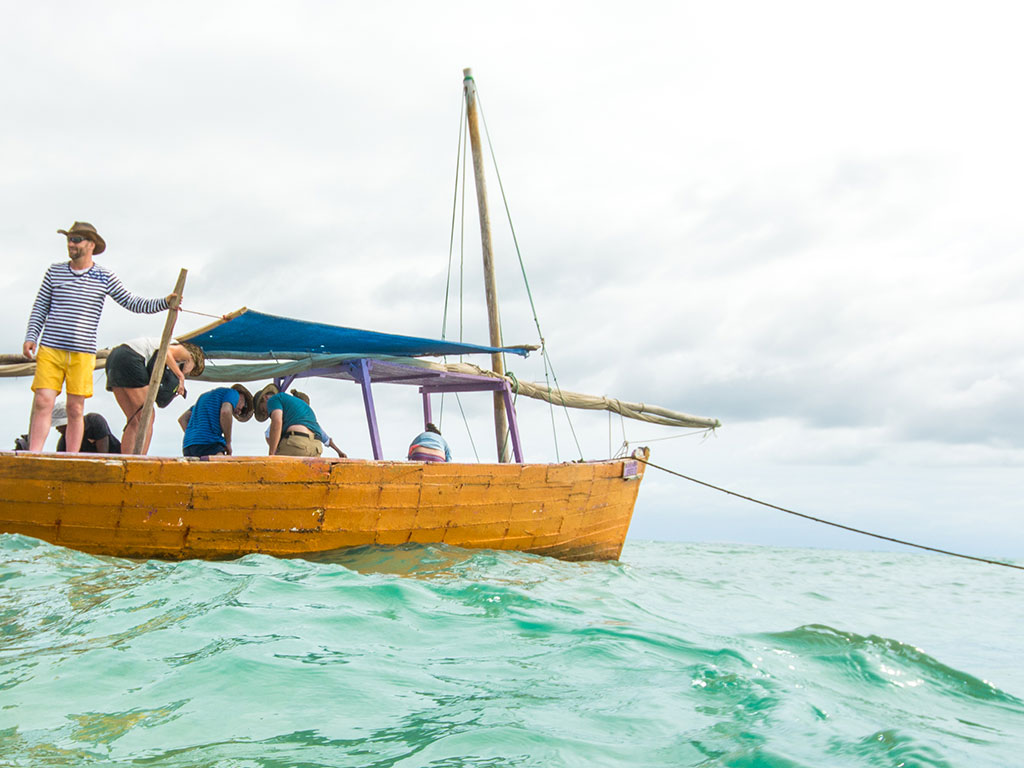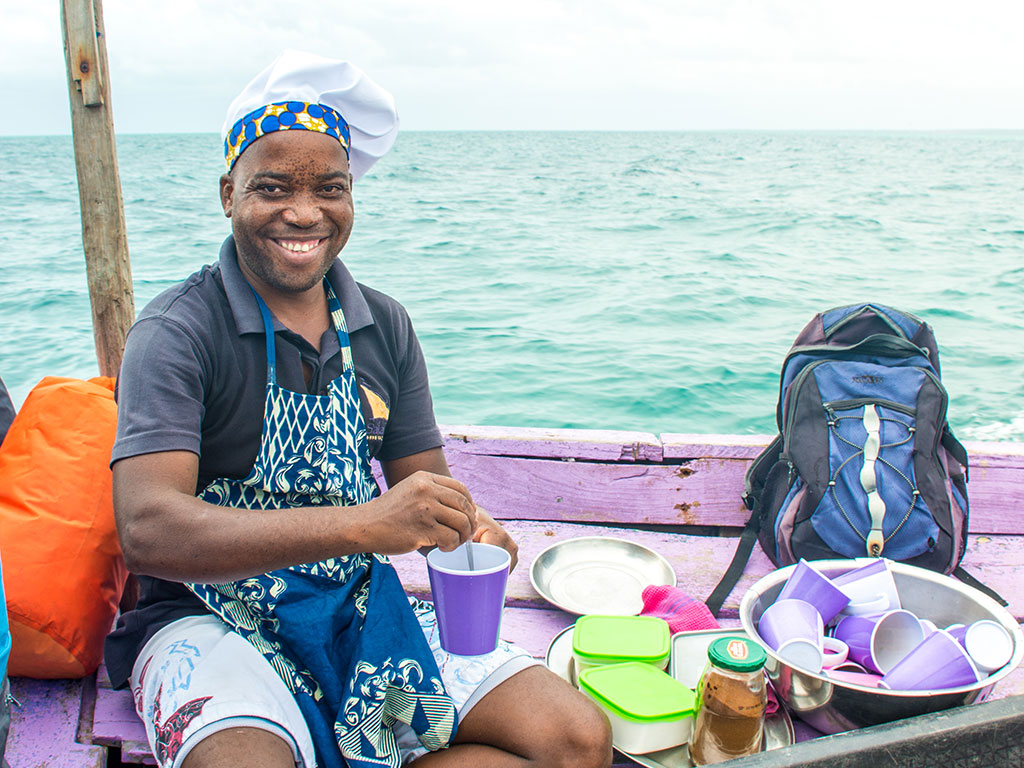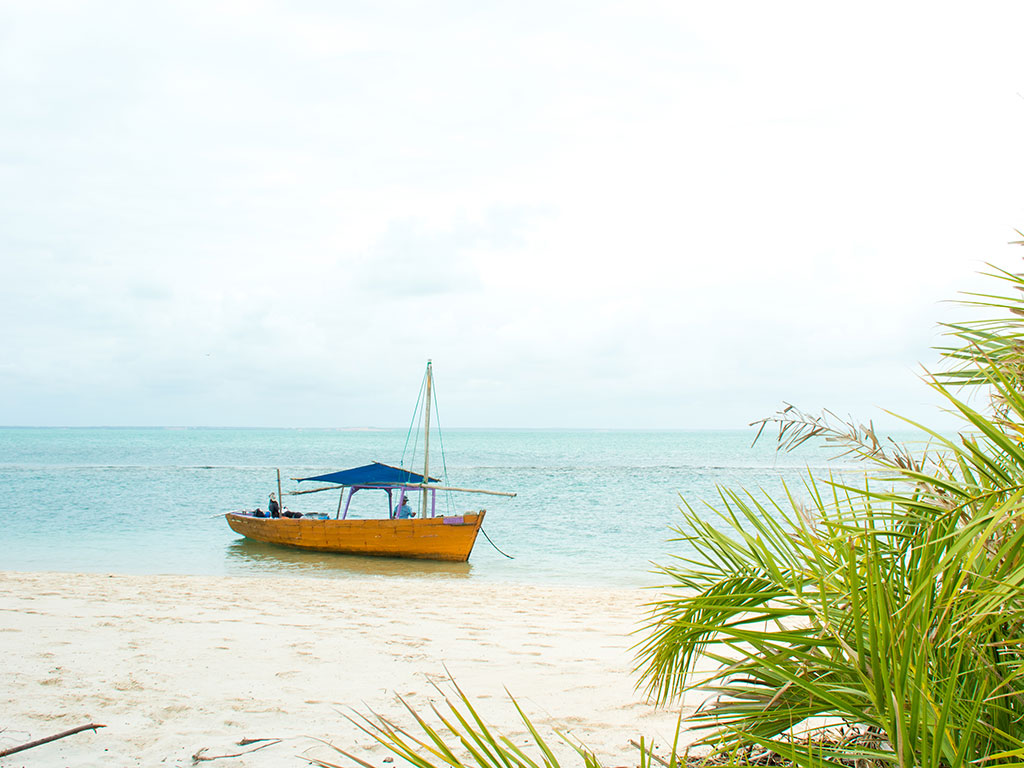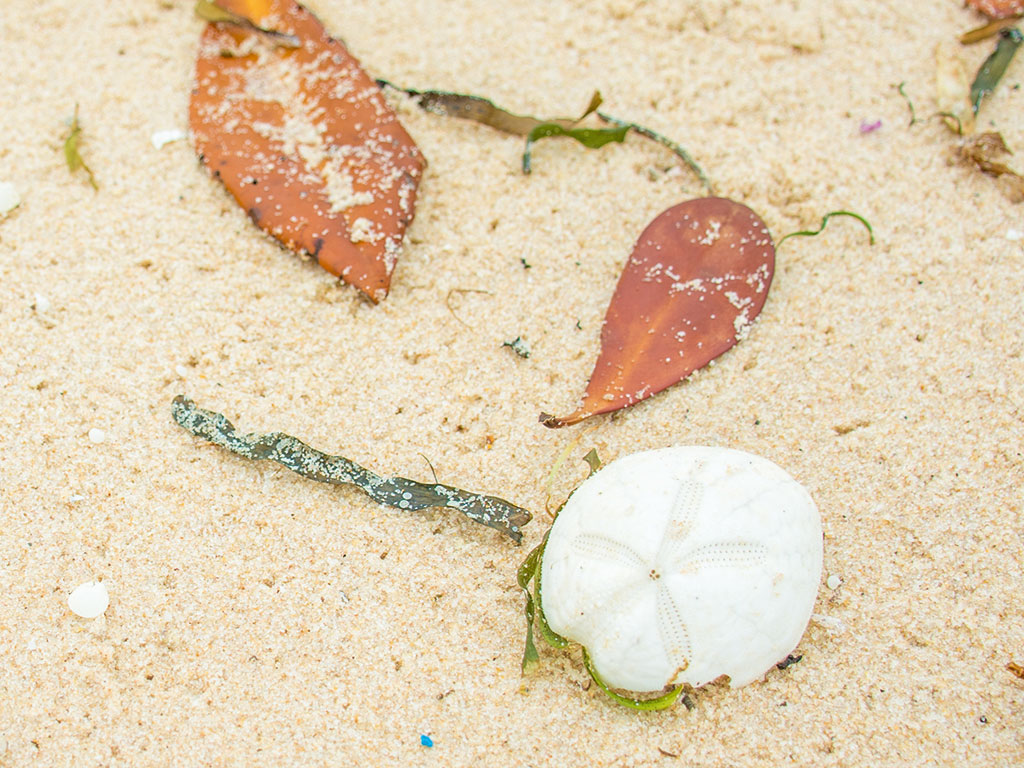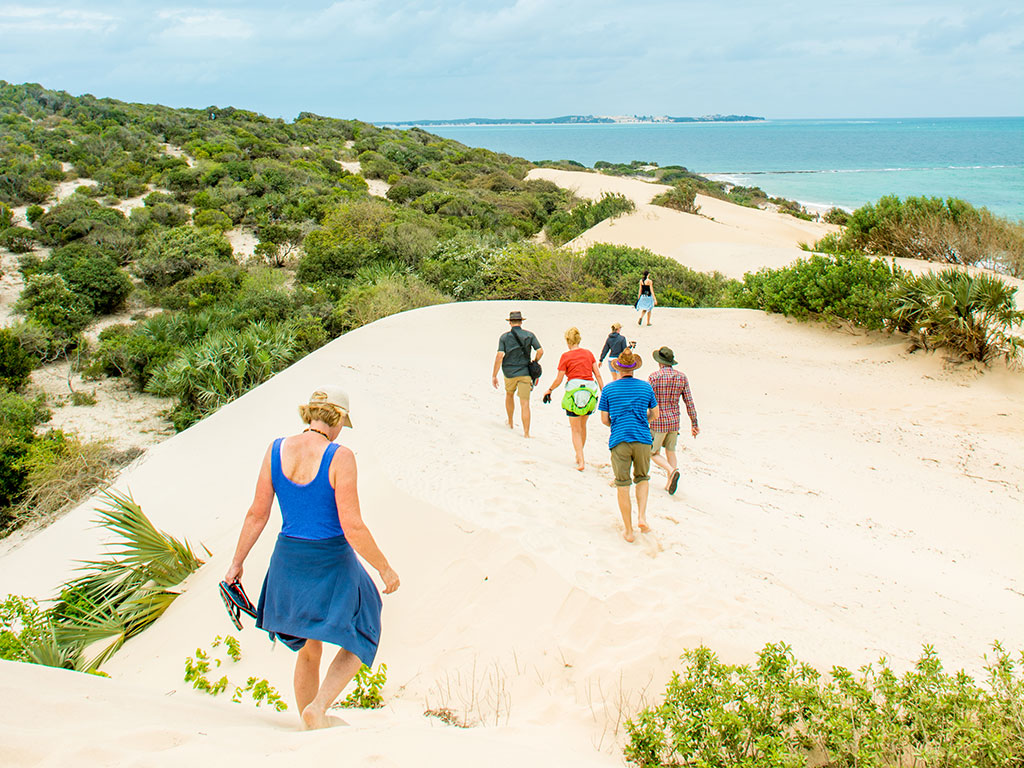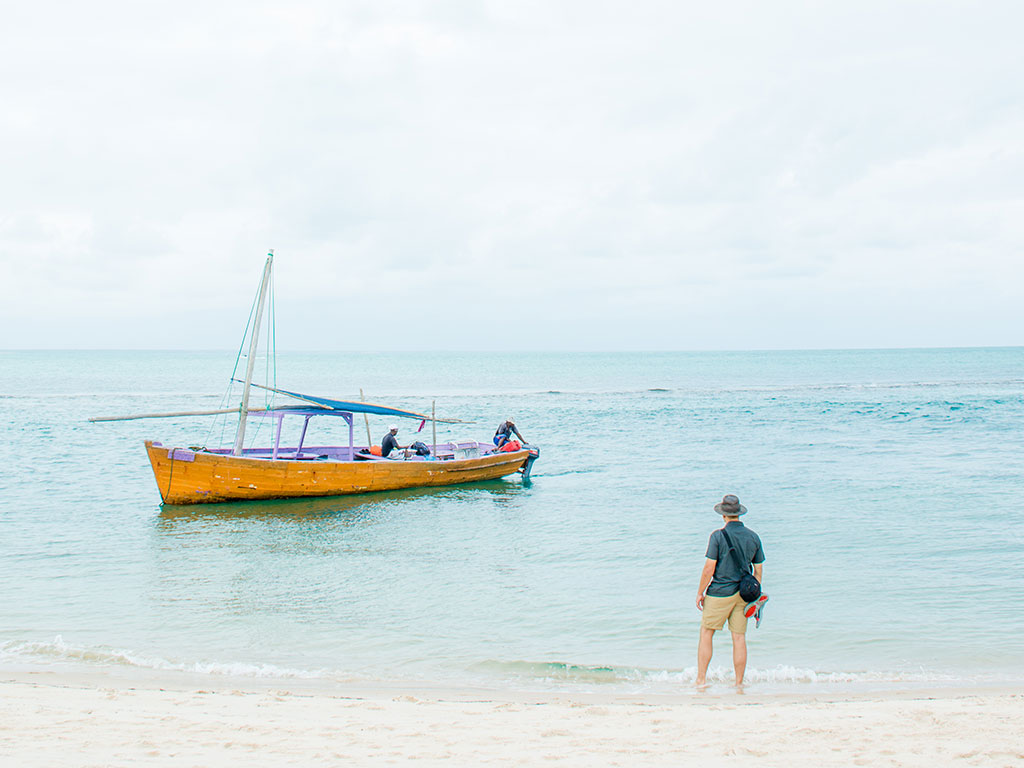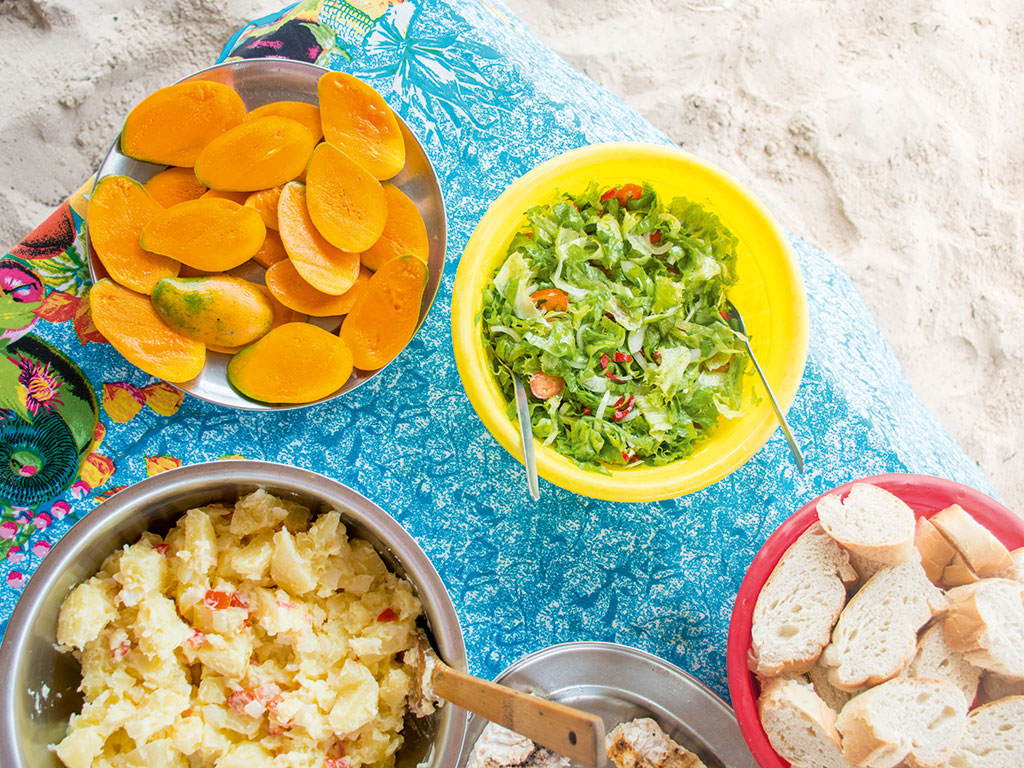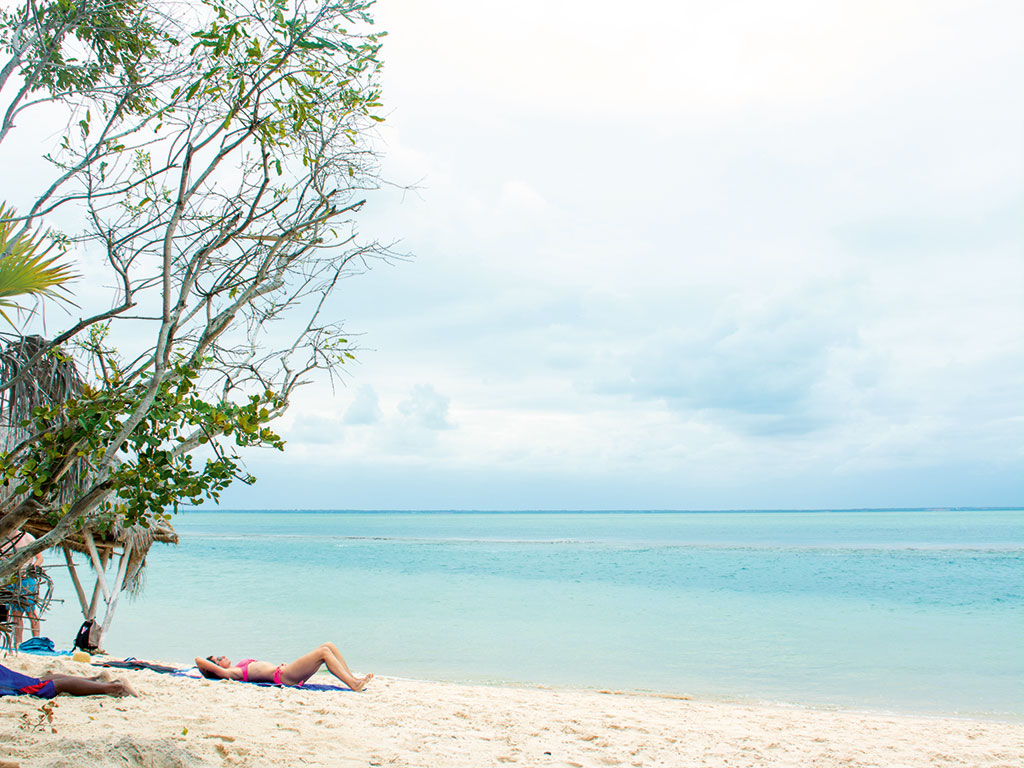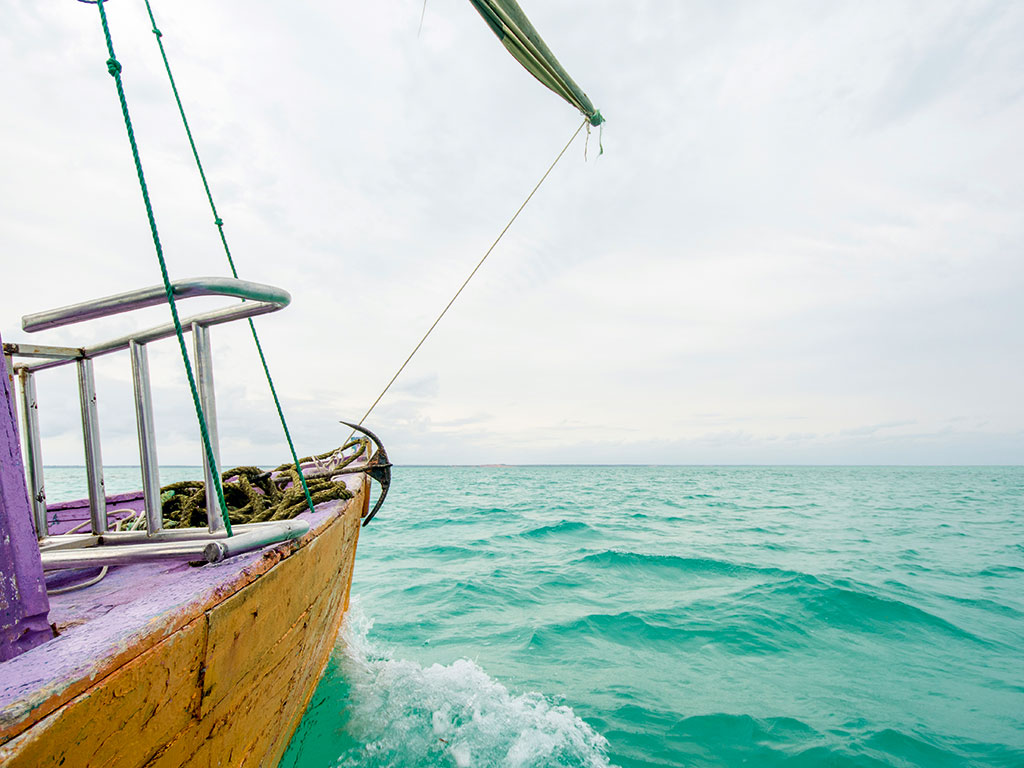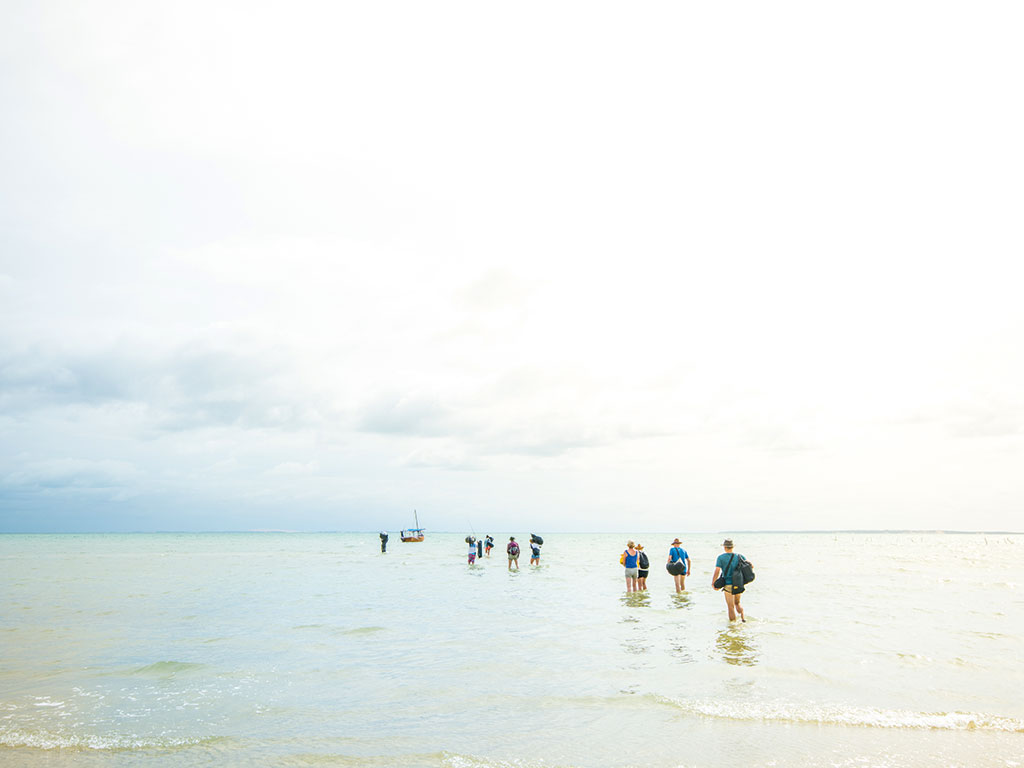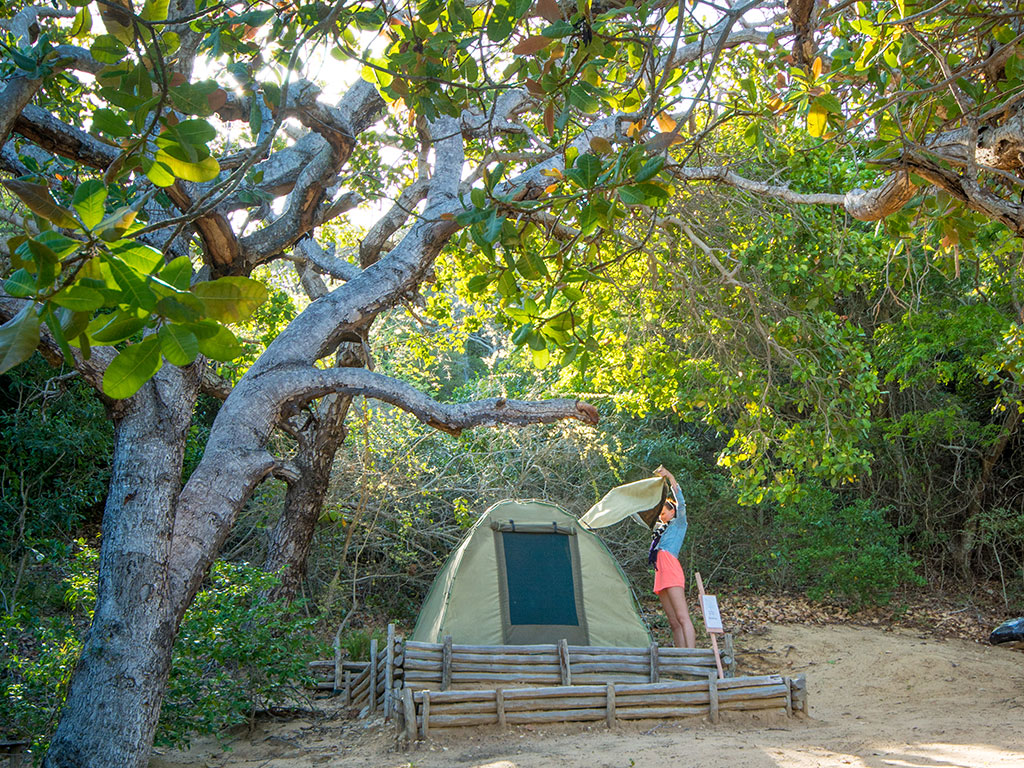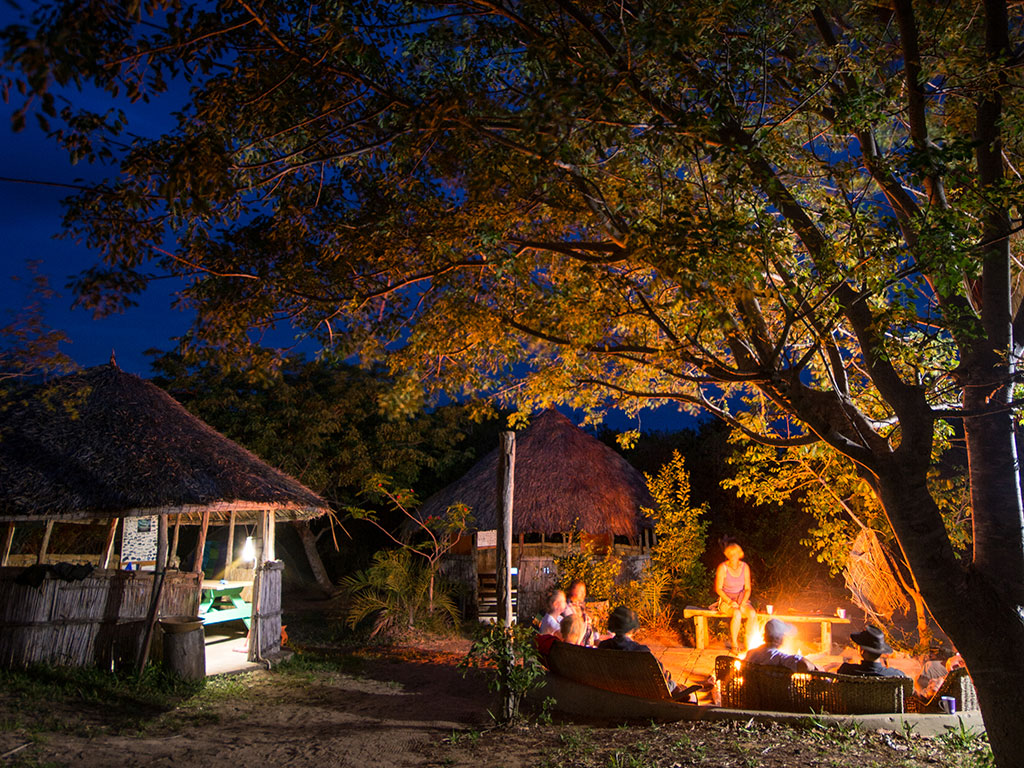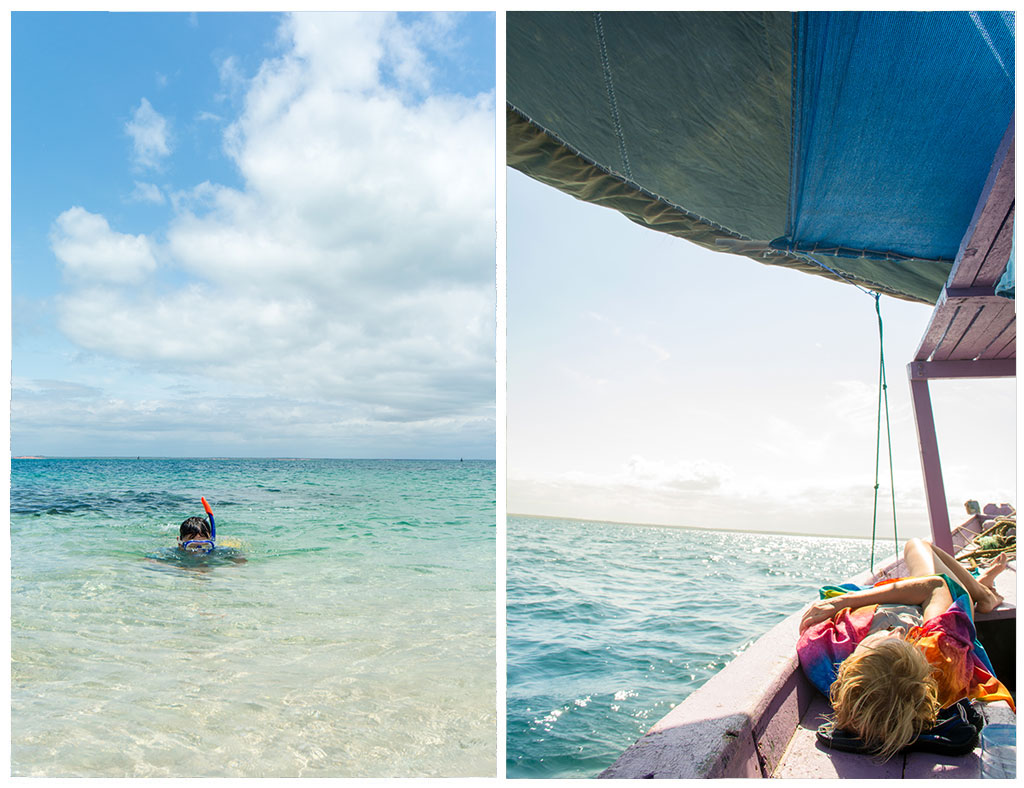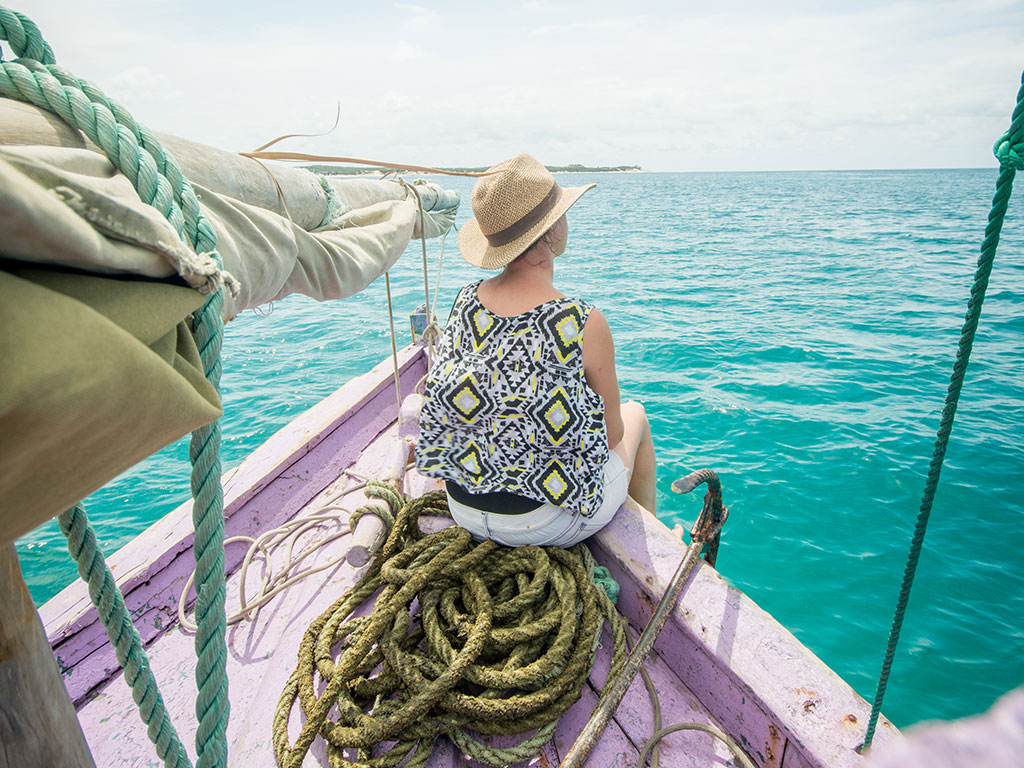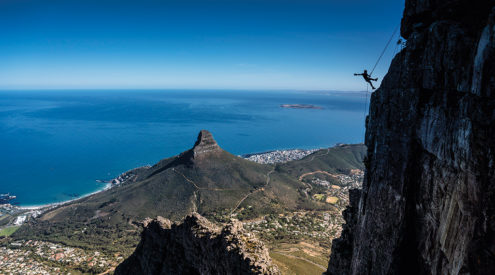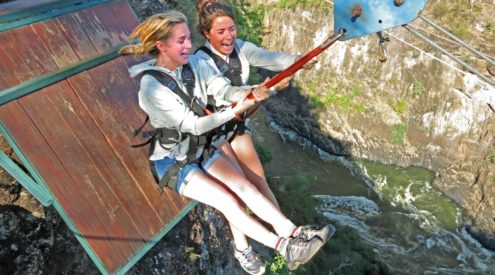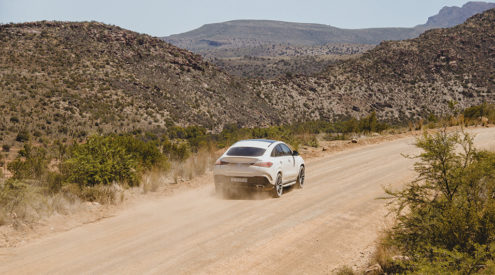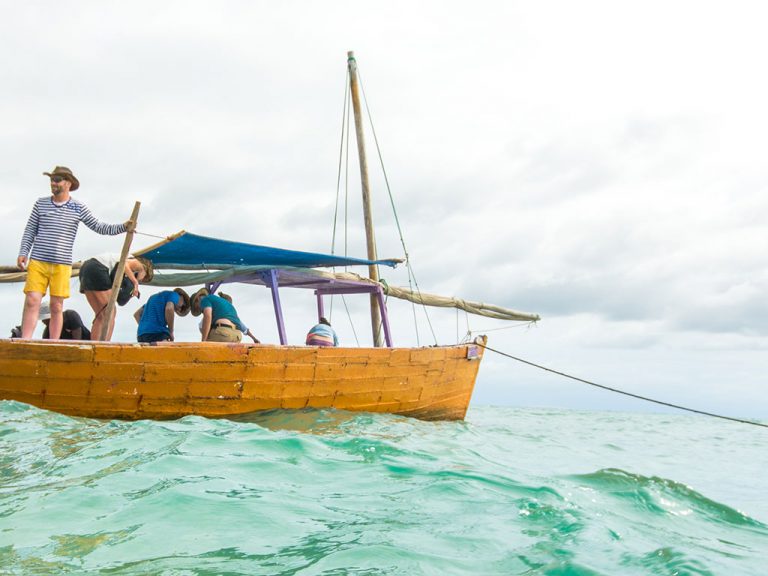
Image: Melanie van Zyl
Today, Vilanculos is a kitesursufing mecca. These neon birds float over Mozambique’s warm transparent water as winds whip the shore’s palms into a soothing white noise.
But before kites, these coastal winds moved people in a different way. Dhows have been sailing the Indian Ocean, linking people, islands and economies, for over a thousand years.
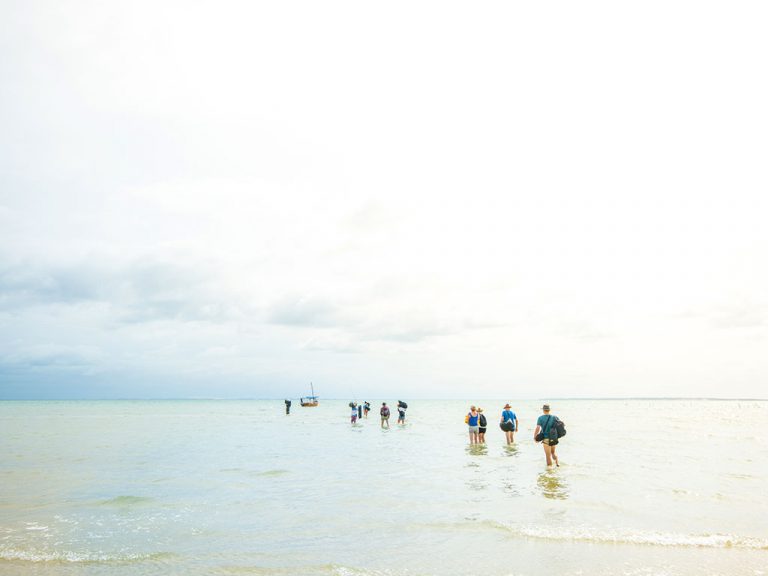
Each morning we’d wade out to the waiting dhow with our towels and cameras. Image: Melanie van Zyl
There are five islands off the coast of Vilanculos, but the only way to stay on one of them is to sleep in the exquisite but expensive high-end lodges.
Luckily, there’s another way to experience these turquoise-encircled specks of land – the idyllic Bazaruto Archipelago should really be discovered the old way, by traditional dhow.
An overnight camping dhow safari with Sailaway takes you to Benguerra Island, home of freshwater lakes filled with crocodiles, and to towering sand dunes surrounded by the bluest-imaginable hues on the archipelago’s namesake, Bazaruto Island.
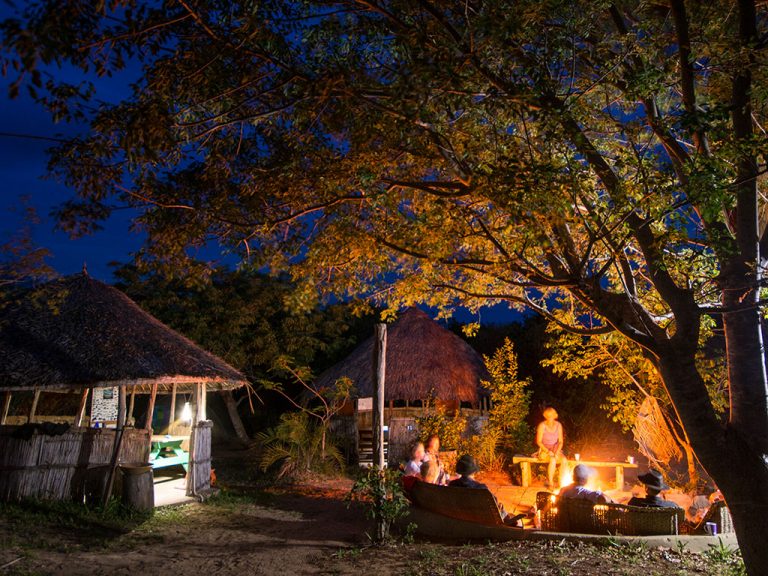
The evenings at Sailaway base camp are spent around the fire. Image: Melanie van Zyl
Sadly, you can’t pitch a tent on these islands but the Sailaway base camp will make you feel no less Robinson Crusoe.
Situated roughly 10 kilometres north of Vilanculos town, the Chigamane campsite has classic canvas tents set up beneath trees, overlooking a blue lagoon and a central firepit that encourages long conversations under the stars.
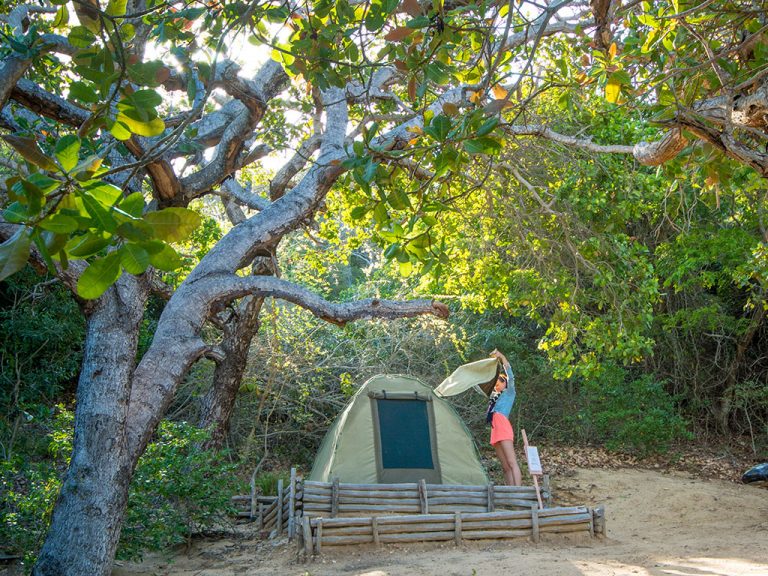
Each classic safari tent at Sailaway’s campsite is set up in the shade of msasa and cashew trees. Image: Melanie van Zyl
Our first day aboard the dhow, our host Dominique Cortes-Salat says with a smile, referencing air travel, ‘We have coffee on board but no trolley to bring it to you.’
At the back of our surprisingly big boat, there’s a simple sandpit-surrounded fireplace where crew Alfredo Boane and Miguel Vilanculo boil water and cook lunch for the 12 of us.
We leave Vilanculos behind and learn of the islands that lie ahead.
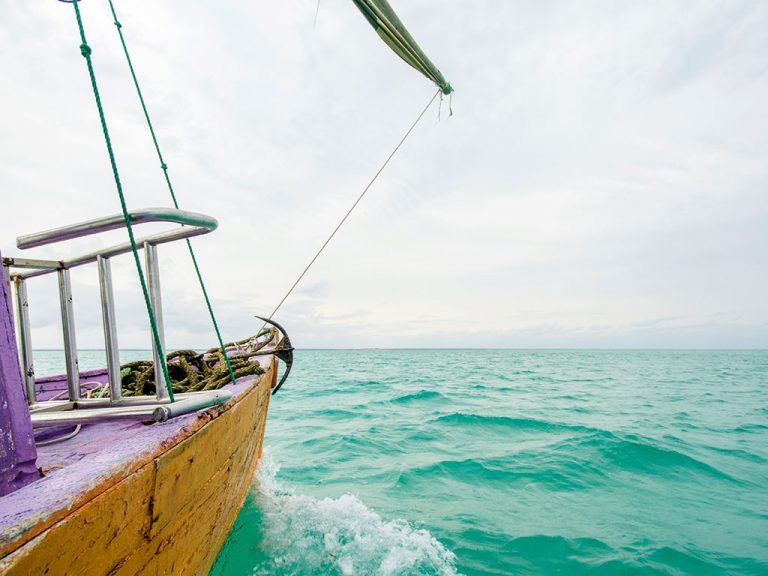
A trip from the mainland to the islands takes at least an hour and a half
by sail power. Image: Melanie van Zyl
The Bazaruto Archipelago lies 30 kilometres offshore and was once part of a mainland peninsula, which broke up into island-sized pieces over thousands of years – the crocs inhabiting Benguerra are testament to this. Bazaruto is the largest island in the group, at 37 kilometres long and up to seven kilometres wide.
At the end of 2017, the National Administration of Conservation Areas (Anac) and conservation NGO African Parks announced the signing of a 25-year agreement to restore, develop and manage Mozambique’s Bazaruto Archipelago National Park, a 143 000-hectare marine park established in 1971.
This is great news. Three of the islands are permanently inhabited with about 6000 people living off the area’s marine resources. The goal is to combat illegal fishing by working with the community and provide better protection for the park’s incredible diversity, which includes the vulnerable and vegetarian dugong.
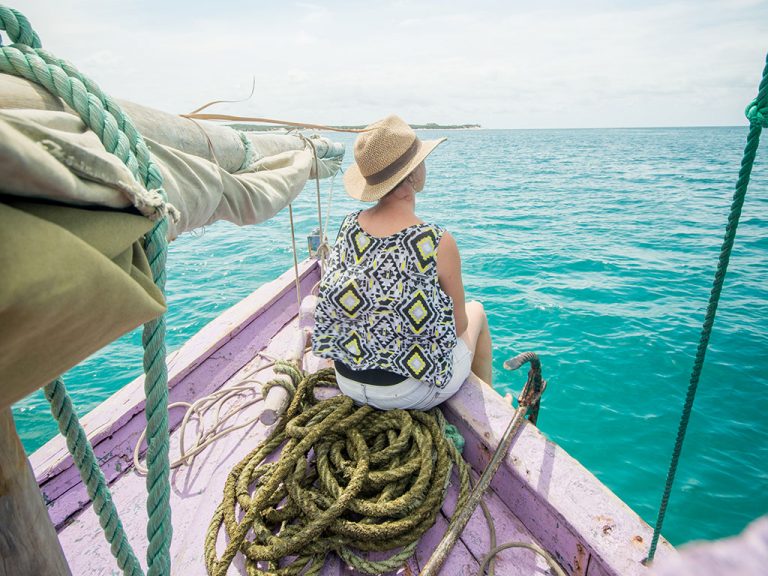
Dolphins and dugongs inhabit the warm waters off Mozambique. There’s no better way to spot them than from a colourful, creaky old dhow, although dugongs are becoming increasingly rare. Image: Melanie van Zyl
Dhows are slow, but this mode of transport speaks to Mozambique’s general seaside pace and I secretly hope it’ll give me more time to spot these elusive creatures.
The dugong population in the greater Bazaruto region is considered to be the last viable population in the Western Indian Ocean.
Alarmingly, on the latest aerial survey conducted last year, the research team spotted just eight dugongs (including a calf), along with 99 turtles, 21 sharks, 49 dolphins, 65 rays and 309 fishing boats. With just three days aboard a dhow, my chances of seeing them are slim.
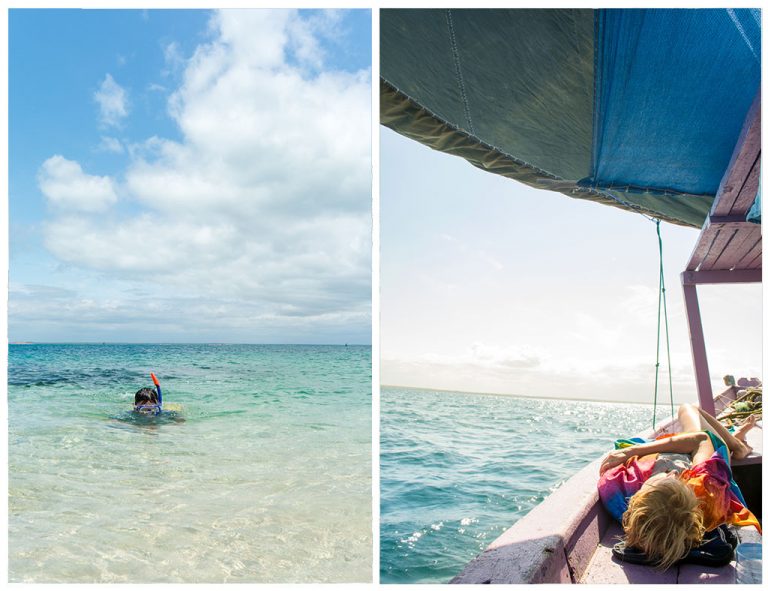
Left: Snorkelling in a quiet cove off Benguerra Island. Right: Relaxing as the dhow carries us to the islands. Image: Melanie van Zyl
The boat itinerary will always depend on tides, wind and other weather, but on our first day we set sail for the closest island, Magaruque.
We have to wait for the right tide in order to snorkel without being swept away on the ‘Magaruque Express’, so first we walk around the island, taking in the coastal dunes and radiant plants, keeping our eyes peeled for pretty sea-urchin shells swept up by the waves. We also see a local fisherman trying his luck from the exposed low-tide reef.
I join the fish for a splash in the sea and come back ashore for a feast of fresh seafood, sweet mango slices, salad, bread and warm potato salad – all prepared on the dhow.
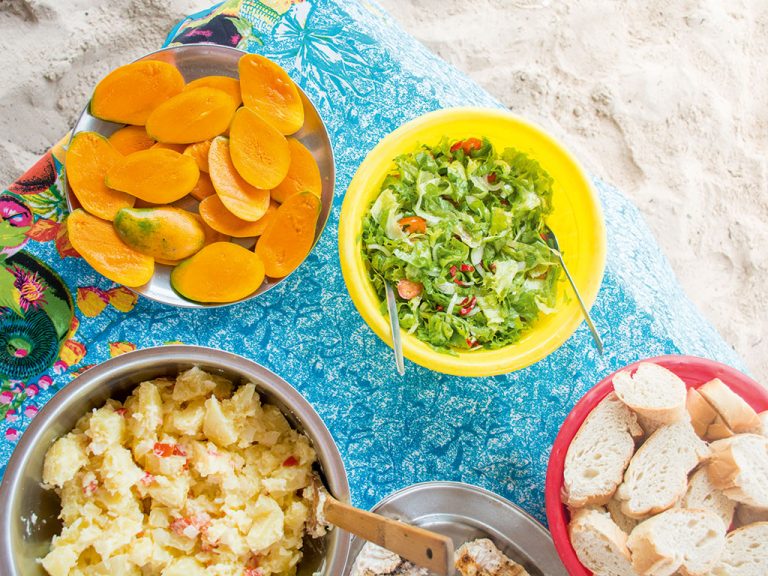
A tropical lunch made
on the dhow. Image: Melanie van Zyl
Sadly, the snorkelling afterwards isn’t as impressive, due to poor visibility. But the ocean current sweeps me gently along and despite the weather I still see lots of reef fish and relish my time immersed in the warm water. Back on board, there’s coffee and popcorn for our return trip to the campsite on the mainland.
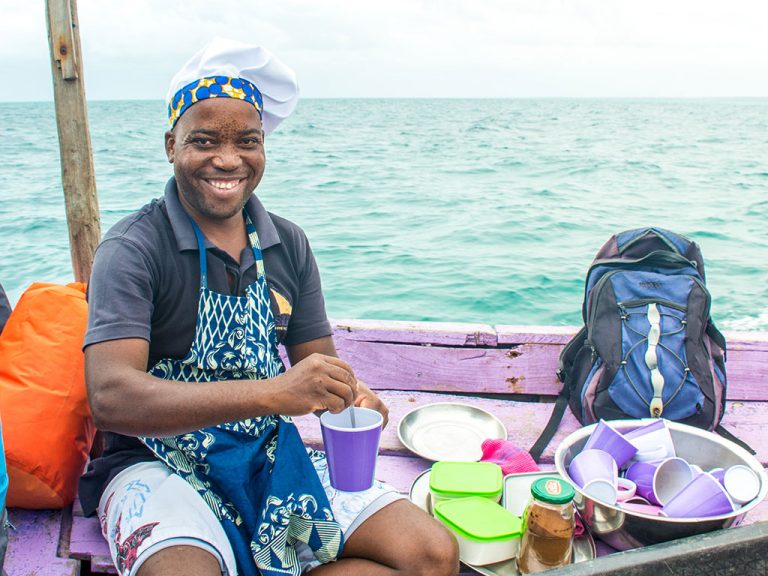
Alfredo Boane rustles up some coffee for after our snorkel Image: Melanie van Zyl
Sailaway is a 20-year-old operation with an experienced crew, and day two is another exceptional one. The waters change from a Mediterranean azure to midnight blue and back again, then to gemstone translucency on our way to Benguerra Island.
We have the beach completely to ourselves and snorkel at leisure around a small rocky bay. It’s shallow but teeming with life.
There’s a small eel waving to me in the water; a lion fish wafting to and fro, wondering whether to exit its small cove; tiny chocolate dippers and plenty more colourful life suspended everywhere. With all this marine magic, I struggle to leave the water but the midday sun forces me back to land. Today’s lunch is served on the dhow and, thankfully, beneath a cloth canvas.
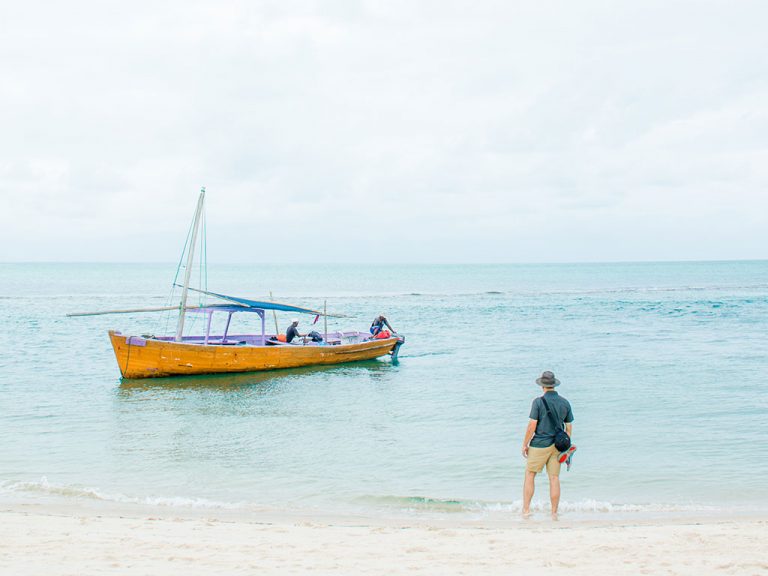
Image: Melanie van Zyl
The majority of our days are spent lazing on the benches of the dhow, travelling between the islands. It takes at least an hour and a half from the mainland for each excursion, but this is the beauty of such a trip.
I’m forced to chill out and watch the waves for any turtle heads that might peak out or, luck willing, the flick of a dugong’s mermaid tail.
Munching popcorn post-snorkel again on our way back to camp, I think about tomorrow’s trip to Bazaruto Island. There’s the dunes of Ponta Dundo to clamber up, views to be soaked in and more snorkelling to be done on the famous Two Mile Reef. But with the gentle waves slapping the sides of our wooden boat and the winds gently filling the sail, I’m really in no rush at all.
Plan your trip
Getting there
The safari starts and ends in Vilanculos, which is 520km by road from Maputo on the EN1. Direct flights from Joburg to
Vilanculos cost about R5800 return. flyairlink.com
When to go
April to December is the best time – the weather is dependable and underwater visibility is good. Just try to go outside of the Easter peak season. January to March is the rainy season and the most likely time for cyclones; fortunately, it has been 11 years since one hit Vilanculos.
Need to know
Take a UPF 50+ hiking shirt or rash vest, water shoes to navigate the sharp rocky bits and a dry bag for your gadgets. A torch will be handy around camp too. The dhow is an open boat – if it rains you will get wet. Snorkel gear is provided but bring your own if you prefer. The islands are in a malaria area, so take precautions. If you’re prone to seasickness, bring medication. Get local currency beforehand as the daily park fees (400 meticals / R84) are paid directly to park offi cials, not included in the tour rates.
The dhow safari
I did the two-night, three-day safari, which I recommend. It was long enough to explore three islands in the archipelago. There are also one- and three night options. The Sailaway beach camp is pretty basic but has hot showers and flushing toilets. Tents are equipped with camping mattresses, pillows, sleeping bags and lights. There is also the option to upgrade to a chalet (R990 per person extra for two nights, sleeps two).
Rates include the services of a guide and back-up crew as well as all meals and water, tea, coffee and juice. Alcohol is not included – buy beers before the trip and ask for them to be kept cold. A two-night dhow safari costs from R4180 per person(for four or more). sailaway.co.za
This story appears in the March 2018 issue of Getaway magazine.
Our March issue features three magical train journeys, how to plan your escape on a dhow safari around Bazaruto, where to eat delicious fare when you have only 36 hours in Mumbai, plus lots more.










